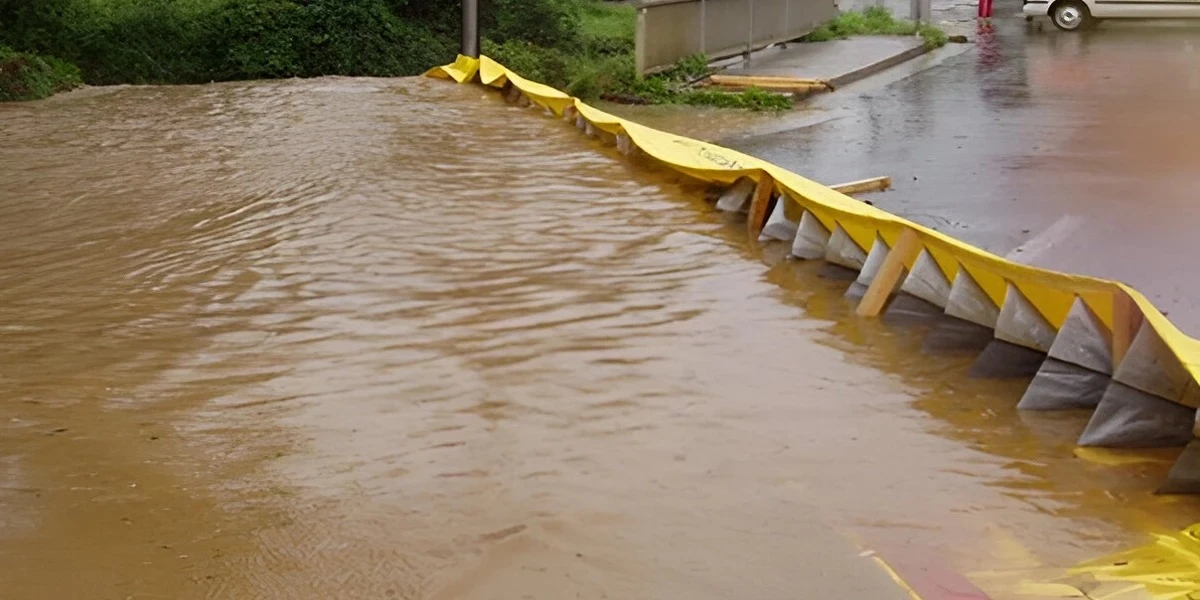

Floods come fast. Sometimes there’s a warning, and sometimes there isn’t. By the time water rises, there’s little time to react. People rush to protect homes, shops, or offices. That’s when a portable water barrier can save the day.
It’s not a fancy piece of equipment. It’s a smart, simple idea — a barrier that you can carry, unfold, and place wherever you need to stop or divert water.
Companies like Yooil Envirotech have made these barriers strong, quick to install, and reusable. When used correctly, they can prevent a flood from becoming a disaster.
A portable water barrier is like a flexible wall. It keeps floodwater away from buildings, streets, or equipment. You can set it up in minutes, move it, or store it after use.
Most are made from durable materials that resist tearing or puncturing. They’re light enough to carry but strong enough to hold back tons of water once filled or anchored.
The best part is how they work. The pressure of the floodwater itself helps the barrier stay firm and sealed against the ground. No heavy machines are needed.
Sandbags have been around forever. They work — but they’re slow, heavy, and wasteful. A flood water barrier does the same job faster.
For decades, sandbags have been used to divert floodwaters or potential floods away from sites. These sandbags fall under the "single-use" category since they lose strength when exposed to water. These are not very cost-effective as they require a lot of effort to fill, carry, and install. Pocket Dam is a very good alternative to sandbags as these are very cost-effective, quick, and easy to install.
When the flood ends, you empty it, clean it, and pack it away. The same barrier can be used again and again. It’s practical, cost-friendly, and saves huge amounts of labour.
Picture this. You know water is coming. You roll out the barrier where you want the line of defence. Anchor the ends, and either let the water itself or a pump fill the tubes.
As the water flows in, the weight locks the barrier in place. It shapes itself to the ground, forming a tight seal. The flood pushes, but the barrier holds.
Once things calm down, you release the water, dry it, and fold it back into storage. It’s that simple. No cement, no debris, no waste left behind.
Portable barriers work almost anywhere. A few examples:
The biggest advantage is that one system can move from one place to another. You can protect different areas each time.
Not all barriers are made the same. Before buying, check:
Yooil Envirotech’s barriers are built around these points. They’re made to fit real ground conditions, not just flat surfaces.
A small town near a river in North India faced flash floods every year. Instead of building permanent walls, the local authority bought portable barriers from Yooil.
During the next heavy rain, they rolled out the barriers along the lanes close to the river. Within an hour, the system was ready. When the water rose, the barrier held.
No homes flooded that year. Afterwards, the barriers were drained, cleaned, and stored. The same ones were used again the next season.
That’s how simple technology can save lives and property.
People sometimes treat flood control lightly. Here’s what usually goes wrong:
Avoiding these small mistakes makes the system last for years.
Climate patterns are changing fast. The rains are heavier. Floods happen in places that have never seen them before. Permanent walls can’t be built everywhere.
A portable water barrier fills that gap. It’s quick to install, easy to move, and strong enough to stand up to real pressure. It’s the kind of simple idea that saves big costs in recovery later.
For cities, industries, or even private homes, these tools are becoming an essential emergency resource.
Yooil Envirotech is one of the few companies in India that offers a full range of flood management systems. Their reusable flood barrier is designed to deploy fast without any extra support. It relies only on water pressure for stability.
Pocket dam technology, also known as portable dam technology, is a water management technique that involves the use of inflatable structures to temporarily create barriers in water bodies. These structures are typically made of durable, flexible materials such as rubber or reinforced fabric.
The material is tested for high strength, and the system can replace hundreds of sandbags. It’s built for repeated use and suits both small and large-scale flood control projects.
Yooil also helps clients plan their barrier layout and provides on-site support for setup and training. That’s what makes their solutions practical for real-world emergencies.
If you visit yooil.co.in, you’ll see they work on many water management fronts — from flood barriers to water storage and hydraulic systems. Their approach focuses on safety, sustainability, and smart design.
Floods can’t be stopped, but their damage can be reduced. With a reliable water barrier system, you can protect what matters most — people, homes, and livelihoods.
A portable water barrier gives you time, control, and safety when everything else seems uncertain. It’s the kind of preparedness that pays off every time the skies open up.
For those who take flood safety seriously, Yooil Envirotech’s barriers are worth a look. They’re made for speed, built for strength, and proven where it matters most — in the field, when the water rises.
